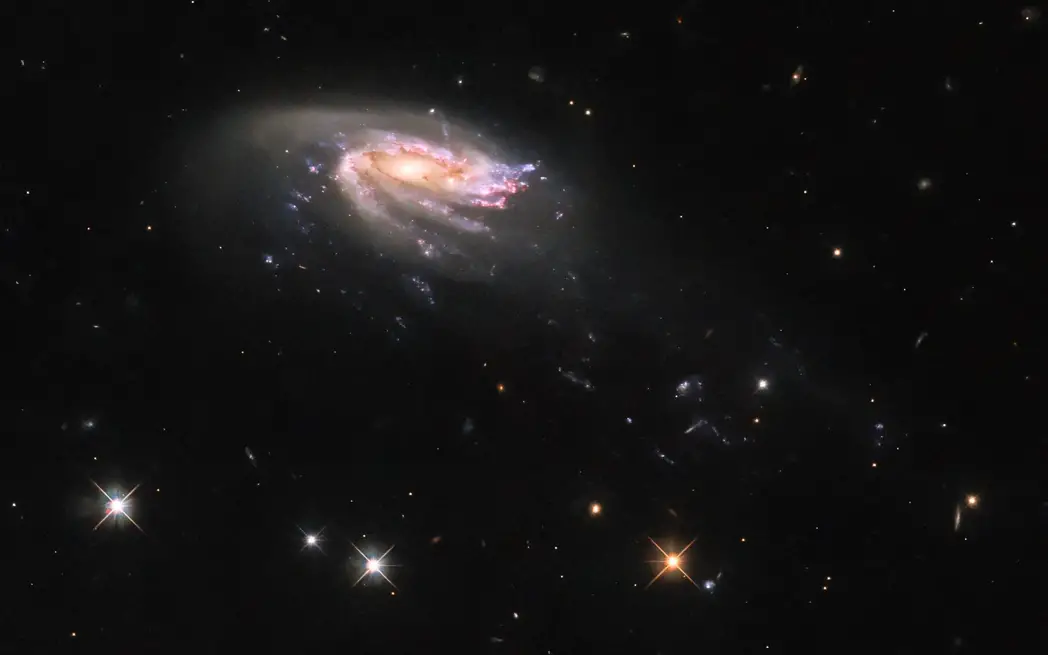The NASA/ESA Hubble Space Telescope has captured a striking image of the Jellyfish galaxy JO206, located over 700 million light-years away in the Aquarius constellation. This image marks the final observation in a series dedicated to jellyfish galaxies, named for their distinctive shape, which resembles a jellyfish with trailing tendrils of star formation. Credit: ESA/Hubble & NASA, M. Gullieuszik and the GASP team

The Hubble Space Telescope has released its final image in a series of jellyfish galaxies, showcasing JO206 in the Aquarius constellation. Named for their resemblance to jellyfish, these galaxies have tendrils of star formation caused by interaction with intra-cluster medium in galaxy clusters. Hubble’s findings suggest that environmental conditions minimally affect star formation, as evident from the similarities between star formations in the galaxy’s main disc and its tendrils.
The jellyfish galaxy JO206 trails across this image from the Hubble Space Telescope, showcasing a colorful star-forming disc surrounded by a pale, luminous cloud of dust. A handful of bright stars with criss-cross diffraction spikes stand out against an inky black backdrop at the bottom of the image. JO206 lies over 700 million light-years from Earth in the constellation Aquarius, and this image of the galaxy is the sixth and final instalment in a series of observations of jellyfish galaxies. Some of Hubble’s other observations of these peculiar galaxies — which range from grandiose to ghostly — are available here.
Jellyfish galaxies are so-called because of their resemblance to their aquatic namesakes. In this image, the disc of JO206 is trailed by long tendrils of bright star formation that stretch towards the bottom right of this image, just as jellyfish trail tentacles behind them. The tendrils of jellyfish galaxies are formed by the interaction between galaxies and the intra-cluster medium, a tenuous superheated plasma that pervades galaxy clusters. As galaxies move through galaxy clusters they ram into the intracluster medium, which ᵴtriƥs gas from the galaxies and draws it into the long tendrils of star formation.
The tentacles of jellyfish galaxies give astronomers a unique opportunity to study star formation under extreme conditions, far from the influence of the main disc of the galaxy. Surprisingly, Hubble revealed that there are no striking differences between star formation in the discs of jellyfish galaxies and star formation in their tentacles, which suggests the environment of newly-formed stars has only a minor influence on their formation.





